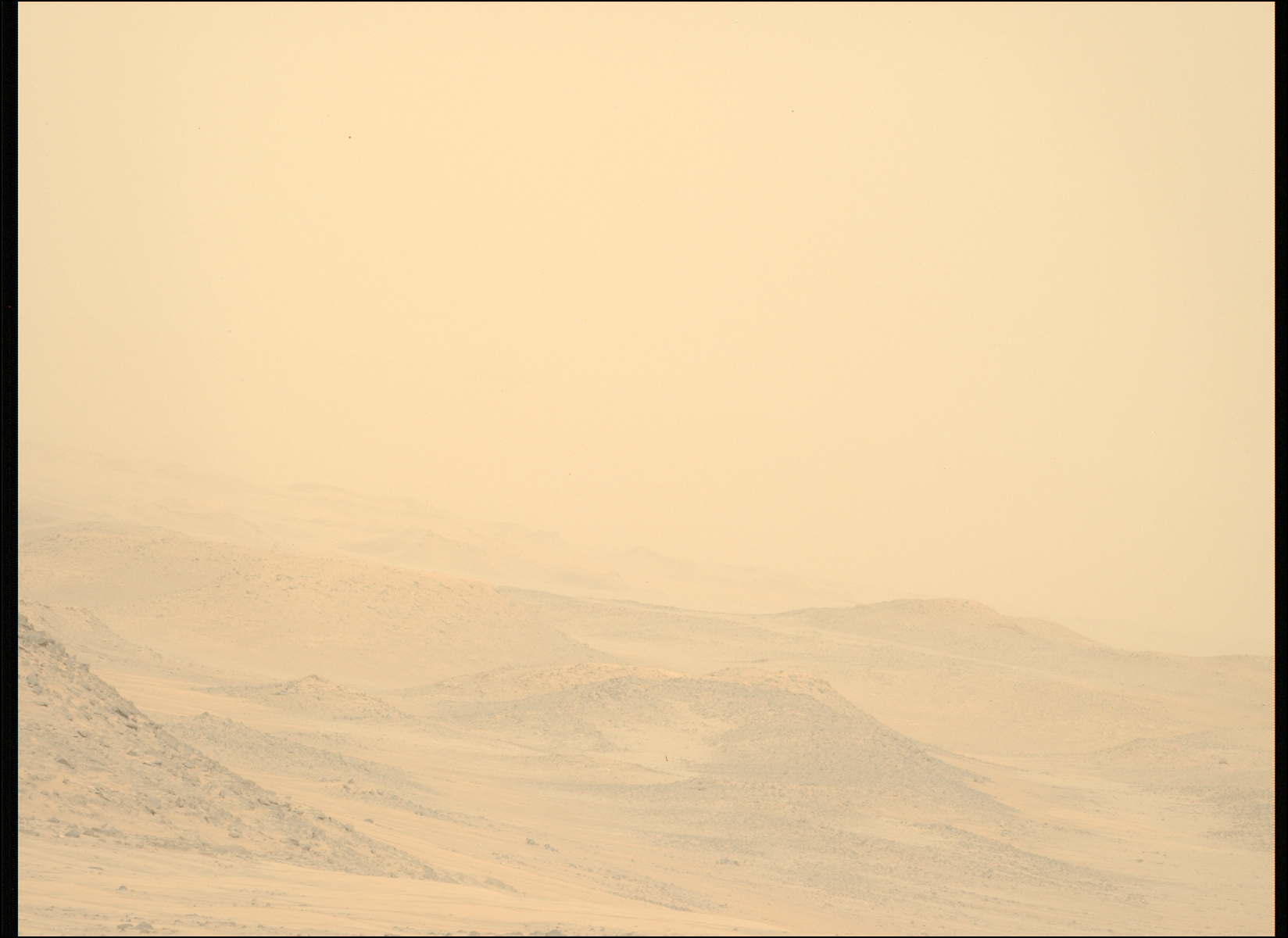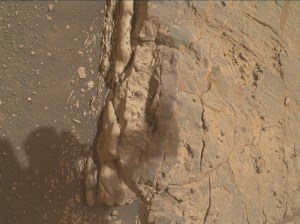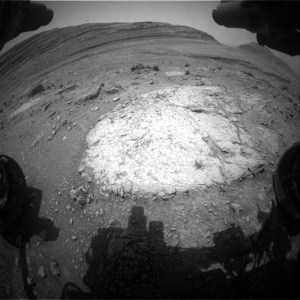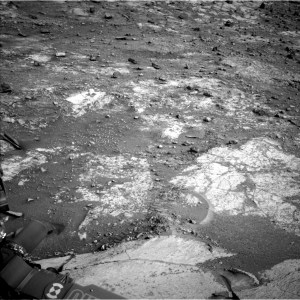- Perseverance Home
- Science
- News and Features
- Multimedia
- Mars Missions
- The Solar System
2 min read

It is dust-storm season on Mars! Over the past couple of weeks, as we have been ascending the Jezero Crater rim, our science team has been monitoring rising amounts of dust in the atmosphere. This is expected: Dust activity is typically highest around this time of the Martian year (early Spring in the northern hemisphere). The increased dust has made our views back toward the crater hazier than usual, and provided our atmospheric scientists with a great opportunity to study the way that dust storms form, develop, and spread around the planet.
Perseverance has a suite of scientific instruments well-suited to study the Martian atmosphere. The Mars Environmental Dynamics Analyzer (MEDA) provides regular weather reports, the cadence of which has increased during the storm to maximize our science. We also routinely point our Mastcam-Z imager toward the sky to assess the optical density ("tau") of the atmosphere.
There are not any signs that this regional dust storm will become planetwide - like the global dust storm in 2018 - but every day we are assessing new atmospheric data. Hopefully the skies will further clear up as we continue to climb in the coming weeks, because we are expecting stunning views of the crater floor and Jezero delta. This will offer the Perseverance team a unique chance to reflect on the tens of kilometers we have driven and years we have spent exploring Mars together.
Written by Henry Manelski, Ph.D. student at Purdue University









